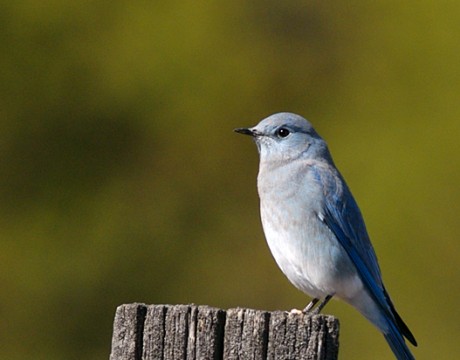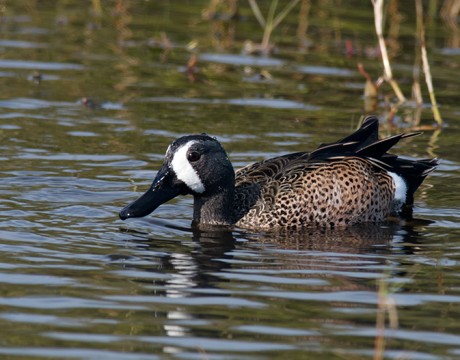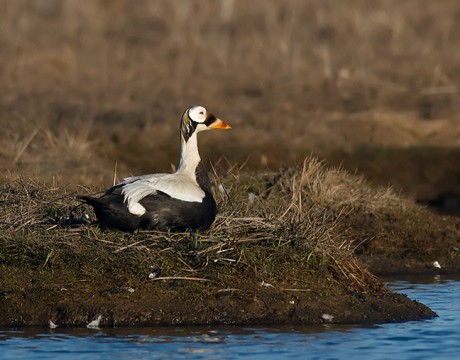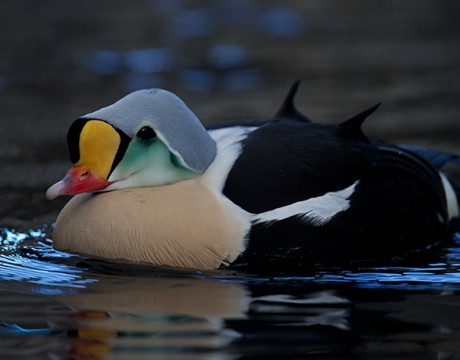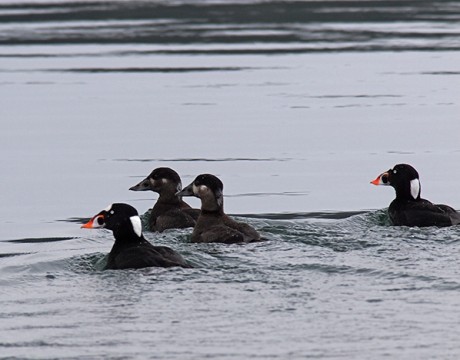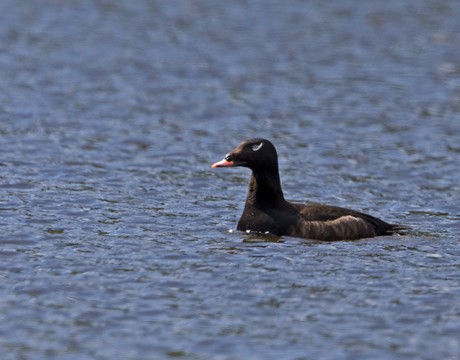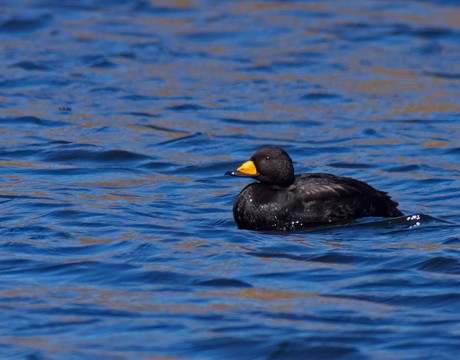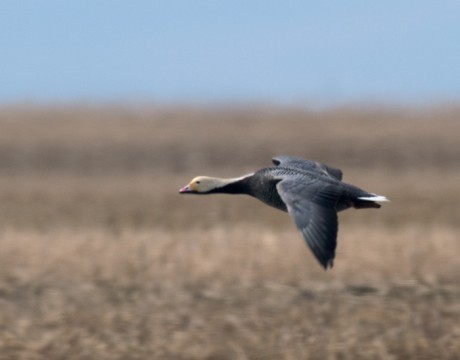Bird of the Week – Mountain Bluebird
Okay, Enough ducks already. Let’s look at a thrush. WC isn’t sure Mountain Bluebirds breed in Alaska every year; they seem to come and go. But it sure is a treat when you find one. Birds of North America says, The Mountain Bluebird is one of the most sublime of all North American passerines. Like other North American bluebirds, it is beautiful, bold, and charismatic, with a dedicated human following. Indeed, many people view bluebirds as emblematic species representing all that is good in the world. The truth is a little less bluebird-like. The species thrives in areas of human…
Bird of the Week – Green-winged Teal
There sure are a lot of ducks… Here’s another dabbler species, pretty common in Alaska. The Green-winged Teal is North America’s smallest dabbling duck. Unlike many of North America’s other dabblers, this one does not breed extensively in the prairie pothole region of the central part of the continent. Instead it’s most abundant during summer breeding season in river deltas and wetlands of the boreal forest in Canada and Alaska. This Teal nests in dense cover, often in shrubs or sedges. While it is heavily hunted, because its breeding areas are far from human activity, its numbers have remained high and may even…
Bird of the Week – Ring-necked Duck
Sometimes WC thinks that birds are deliberately named in a way to confuse birders. This is one of the reasons. WC means, what the heck? Yes, there is an extremely faint, rarely visible ring around the bird’s neck. But thre’s a blinding white, extremely obvious white ring around the bill. Why not Ring-Billed Duck? Sigh. This is an uncommon duck in Interior Alaska; the range maps doesn’t even show the species in the state. But it is, and they do breed here. Despite appearances, this is a diving duck, not a dabbler like a Mallard. The gold eye, double white…
Bird of the Week – Blue-winged Teal
WC and Mrs. WC used to participate in a Birdathon for Arctic Audubon and the late Alaska Bird Observatory. It’s a fundraiser: birders get pledges for the number of species they will see in 24 hours, and then try to find as many species as they can. The more pledges and the more species, the greater the funds raised. One year, after 23.95 hours of non-stop birding, completely exhausted, we were standing at a very swampy pond in the Goldstream Valley, wondering how we would get another species. And, at the last possible minute, a Blue-winged Teal flew in. WC…
Bird of the Week – Spectacled Eider
A close cousin to last week’s King Eider, the Spectacled Eider is another of Alaska’s arctic sea ducks. The Spectacled Eider is classified as Threatened under the Endangered Species Act. But WC suspects there was still poaching back in 2008 when this photo was taken. Getting this close involved a 90 minute stalk wiggling along on WC’s belly, and even then the bird was quite nervous. Birds that weren’t nervous likely wound up in a supper pot. Like a lot of ducks, after mating the drakes leave. But WC was able to find one small group still hanging around together….
Bird of the Week – King Eider
A King Eider drake in breeding plumage is so outrageous looking, that it seems improbable. But, yeah, that’s really what they look like, easily the most colorful of North American waterfowl. This is a sea duck, that comes ashore to nest in tundra ponds along the Arctic coast of North America, including Alaska. The Latin name for this species is Somateria spectabilis. The genus name Somateria is a combination of the Greek words sōma or sōmatos, meaning “body”, and erion, meaning “wool”; the combination, “wooly body,” is a reference to the eider’s famously thick, soft down. The species name, spectabilis is Latin for “showy”, “remarkable” or “worth seeing”, a reference to the handsomeness of the adult…
Bird of the Week – Surf Scoter
The third and last scoter that breeds in Alaska – or North America for that matter – is the very cool Surf Scoter. With the white neck patches and that extravagant white and orange bill, it’s very easy to identify this species. This medium-sized sea duck breeds in boreal forest lakes of northern Canada and Alaska, and during nonbreeding periods is widely distributed in nearshore marine habitats along both the Pacific and Atlantic coasts of North America. Surf Scoters are aptly named. They forage in the surf, diving in and out of the waves. They are very strong swimmers, diving as…
Bird of the Week – White-winged Scoter
This week we’ll look at another Scoter, that slightly obscure clade of ducks that breed in Alaska. This week, the White-winged Scoter. The drake White-winged is easily identified by the lovely white line under their eye, the orange bill with a black knob, all against an overall dark body. The white wing of their name are sometimes not visible when they are on the water. In flight, however, it’s another excellent field mark. Of the North America’s three species of scoters (White-winged, Surf, and Black Scoter), all of which inhabit Holarctic waters, the White-winged Scoter is the largest and best known, in…
Bird of the Week – Black Scoter
We’ll start the New Year with a new duck. Most Alaskans are unaware of the clade of scoters, genus Melanitta. That’s okay, science doesn’t know very much about them either. The Black Scoter is one of the three scoter species that breed in Alaska. The Black Scoter drake in breeding plumage is easy to identify: it’s the only black duck with two-thirds of the top if its bill – technically, its culmen – bright yellow and the rest black. Black Scoters breed in coastal zones and less commonly up the Yukon and Tanana drainages. WC has found nesting birds on…
Bird of the Week – Emperor Goose
We’ll celebrate the holidays with a Christmas Goose, specifically Emperor Geese. The handsome Emperor Goose nests in the coastal salt marsh habitats of arctic and sub-arctic Alaska and Russia and winters primarily on coastal beaches along ice-free areas of the Aleutian Islands and the Alaska Peninsula and Kodiak Island. Locally known as the “Beach Goose” from its winter habit of roosting and feeding near the water’s edge, the diet of this species consists largely of clams, mussels, and algae when wintering and staging in marine and estuarine habitats. When WC was in the Yukon Delta NWR photographing birds, the spring…





